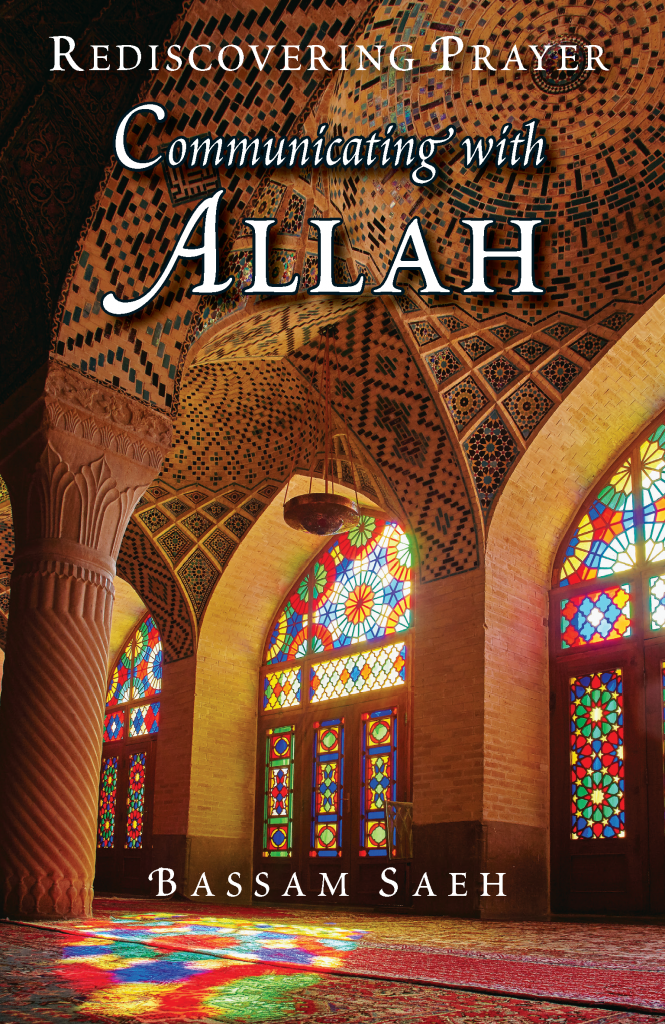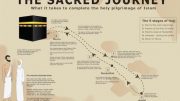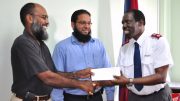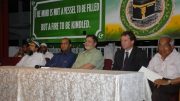
Rediscovering Prayer
This post is originally from from muslimreads.com and written by Jessica Hassan.
Once upon a time, Bassem Saeh was asked to speak at an event about prayer (salah). When the time came, he rushed up to the podium and hurriedly read a few verses and a couple of hadeeth he had jotted down on a piece of paper, reading so quickly that his words ran together. He then turned and left. The audience was shocked and confused. After a moment, he returned to the podium and explained that his performance was no worse than the way that many of us pray. Rushing in, reciting without expression or understanding, and rushing off again.
Communicating with Allah: Rediscovering Prayer is Saeh’s answer to the problem of disconnecting from our distracting, modern lives and finding tranquility in our connection with Allah. Unique and powerful, this book breathes new life into an action that Muslims repeat constantly. If you are looking to worship smarter, a little bit of consistency in improving the quality of your five daily prayers will go a long way.
The chapters are sometimes very short and sometimes longer, each focusing on one idea or one aspect of the prayer. Of the twenty-five chapters, the first eight focus on ideas around the prayer. In them, Saeh tackles questions I have always wondered about. For example, in “The Satisfaction of Waking up Early for Prayer,” he answers the question: Why is Fajr so early? Why isn’t it closer to the other times of prayer? In “Variety: The First Lesson of Civilization,” he answers the question: Why do the different prayers have different numbers of rakahs (units)?
The latter chapters each focus on one aspect of the prayer, beginning with the adhan (call to prayer) and wudu, and moving through each of the phrases we recite. There are quite a few linguistic gems in these sections, as Saeh is a scholar of the Arabic language. (Check out my review of his previous book on the miraculous nature of the Quran here.) For example, he counts thirty-three open-ended phrases in a two-rakah prayer. Many of us know that Allahu akbar literally means “God is greater . . . ” Allah is, without a doubt, greater than everything, but the open-endedness of this phrase allows us to apply it to our everyday lives. For example, He is greater than the work that I will have to put on hold to pray this prayer. Or, He is greater than my financial troubles that seem insurmountable. Or, He is greater than the illness I’m suffering from. Saeh goes on to enumerate all of the other phrases in the prayer that have this open-ended quality, and therefore provide an opportunity for personal reflections that can bring us closer to God.
Saeh shows us that the prayer is a privilege rather than a duty, and if we were praying the way we were meant to be praying, we would be happier and more successful in all of our endeavors. Saeh urges a return to the spirit of Islam, and condemns a focus on the letter that sacrifices the spirit in the strongest terms.
Perhaps my favorite technique of Saeh’s is his use of striking, new metaphors to share ideas that are absolutely essential to our faith. For example, in the second chapter, he asks us to imagine a battle between two ants over a grain of sugar, and how insignificant it might appear to us as humans. Prayer, he explains, allows us to be elevated to a height at which we can view the dunya (this worldly life) in the same way: we can recognize its insignificance.
I commend the translator, Nancy Roberts, for this fantastic translation. The prose is beautiful and flowing, and perfectly idiomatic. Had I not seen the translation credit, I would never have thought this was a translated work.
Finally, I’d like to share an excerpt from “The Rhythm of Prayer and the Rhythm of Life,” in which Saeh discusses the question: Why do we recite silently in some prayers and aloud in others?
Communicating with Allah: Rediscovering Prayer is the best book on prayer I’ve read and my favorite nonfiction Islamic book of the year so far. I highly recommend this book for every Muslim looking to invigorate their prayer, worship smarter, and reconnect with Allah. You can get a copy here: Kube Publishing | Amazon (US)
The publisher kindly sent me a copy of this book in exchange for an honest review.




